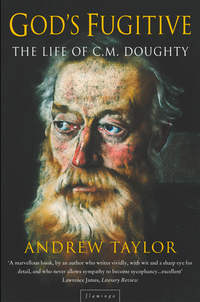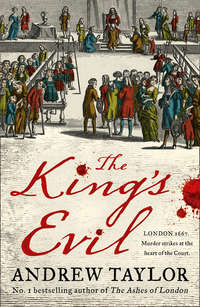
Полная версия
The World of Gerard Mercator: The Mapmaker Who Revolutionised Geography


Dedication
FOR SAM, ABI, AND BEC,
and all the years they have to come.
Contents
Cover
Title Page
Dedication
Introduction
CHAPTER ONE: Pushing Back Shadows
CHAPTER TWO: Forgotten Wisdom
CHAPTER THREE: A Small Town on the River Scheldt
CHAPTER FOUR: Among the Brethren of the Common Life
CHAPTER FIVE: At the College of the Castle
CHAPTER SIX: Doubts and Dangers
CHAPTER SEVEN: Gemma’s Globe
CHAPTER EIGHT: Craftsman and Cartographer
CHAPTER NINE: The Greatest Globe in the World
CHAPTER TEN: In the Hands of the Inquisition
CHAPTER ELEVEN: Two New Arrivals
CHAPTER TWELVE: A New Life
CHAPTER THIRTEEN: Our Europe
CHAPTER FOURTEEN: A Mysterious Commission
CHAPTER FIFTEEN: In the Forests of Lorraine
CHAPTER SIXTEEN: Tragedy
CHAPTER SEVENTEEN: The Sum of Human Knowledge
CHAPTER EIGHTEEN: The World Hung on the Wall: The Projection
CHAPTER NINETEEN: Presenting Ptolemy to the World
CHAPTER TWENTY: A “Thick Myste of Ignorance” Dispelled
CHAPTER TWENTY-ONE: The Geography of the World
CHAPTER TWENTY-TWO: The Gathering Dark
Afterword
Keep Reading
Notes
Bibliography
Index
Acknowledgments
About the Author
Praise
Also by the Author
Copyright
About the Publisher
Introduction
ONE OF MY earliest memories is of myself as a small boy sitting on a wide window ledge, with my whole world laid out around me. As I turned my head, I took in the comfortable, familiar room behind me, the door into the kitchen, and the wooden sideboard up against the wall, while outside I could see down the yard toward the joiner’s shop, which I knew was filled with sawdust and sharp blades. I could also see the familiar stone steps up to my front door, and another house across the way, where an old man used to sit in the doorway for hours on end, dozing.
That was about as far as my world stretched. I was aware, of course, of other worlds beyond, worlds I had heard about, half understood, or imagined for myself. Scattered among them were a few familiar islands that I had visited and knew fairly well – the stone-flagged floor of the greengrocer’s on the corner, for instance, the high wall on top of which I could walk up to the church, or the little vegetable garden where I used to watch my father as he worked – but for all intents and purposes, they were surrounded by darkness. Good things occasionally came in from those shadows outside – bars of chocolate brought by a kindly aunt, perhaps, or my mother’s shopping – but they were on the whole mysterious and unwelcoming, and if I occasionally peopled them with monsters, that was no more than any child does.
The story of discovery and mapmaking is one of pushing back shadows. The great explorers brought back undreamed-of riches and stories of unknown lands and peoples that were barely believable – the discovery of America, for instance, has been described as the greatest surprise in history – but their claims and discoveries had to be evaluated, laid out on paper, before they could form a coherent picture of the world. Much of that work was carried out by unknown figures, whose maps are lost, forgotten, or remembered only by passing mentions in ancient documents. Some were sailors or traders themselves, trying to prepare reliable charts for their own use and for those who came after them, but many were scholars who never went to sea. A few became famous and produced individual maps that stand out as landmarks in the history of the understanding of the planet. But none, in the last two thousand years, achieved as much as Gerard Mercator in extending the boundaries of what could be comprehended.
Mercator saw himself as a scholar in the ancient tradition, an uomo universale in the mold of the Renaissance – a seeker of truth to whom the whole of knowledge was a single book to be opened. His achievement was nothing less than to revolutionize the study of geography and redraw the map of the world.
Born near Antwerp in 1512, he lived through almost the entire turbulent sixteenth century – an age in which the known world grew year by year as new voyages made new discoveries, but one which also saw the Catholic Church and Europe itself torn apart by Martin Luther and the Protestant reformers. The sacking of cities, the smashing of statues by reformist zealots, and the religious savagery of Church authorities were all part of the temper of the times. This was the age of the Inquisition, whose power, as Mercator was to discover firsthand, extended across the Low Countries: The judicial torture and burning of the unfaithful were commonplace. But it was also an age of intellectual upheaval. Almost halfway through the century, the Polish astronomer Nicolaus Copernicus published his revolutionary theory that the Earth revolved around the Sun – an idea that was confirmed some sixty-five years later by the observations of Galileo Galilei through his telescope. The Church, still clinging to the old idea of the Earth at the center of the universe, could make Galileo recant, but it could not erase the new thinking.
By the time Mercator was born, the printing press had made books readily available across Europe, but the language of religion and intellectual debate was the same as it had been in the days of the medieval copyists toiling over manuscripts in the monasteries. Not just the Bible but also scientific, medical, and philosophical texts were written in Latin. At the University of Leuven and later in Duisburg, Mercator’s conversation and correspondence were also in Latin. However, by 1594, the year he died, Bibles in the daily language of the people were commonplace. Galileo’s writings appeared in clear and lucid Italian. This signified more than a change of vocabulary or language; scientists, by the turn of the century, were gaining the confidence to rely on observation, measurement, and reasoning rather than looking into the past for inspiration.

Gerard Mercator
Science Photo Library, London
Mercator’s own life reflected the era of change in which he lived, being full of apparent contradictions and opportunism, and extending over one of civilization’s major crossroads. In many ways a child of the past, he was born into poverty and owed his first chances in life to the wealth of the traditional Catholic Church; yet his surviving letters are those of a tolerant reformist with Protestant leanings, who kept his religious views to himself. Like the artists of the Italian Renaissance, he relied on the favor of princes, dukes, and high dignitaries of the Church, but he also built a commercial business which depended on the new prosperous middle class that economic growth had created.
Mercator studied and created maps with a passionate attention to detail that would have been familiar to any of the scholars or artists of the Italian Renaissance. In his studies, he showed unswerving respect for the authority of Claudius Ptolemy of ancient Alexandria, who had proposed his own map projections – ways in which the Earth might be flattened out onto a sheet of paper. At the same time, Mercator did more than any other geographer of his day to demonstrate that Ptolemy’s classical ideas of the world were outdated, misleading, and often simply wrong. As a cartographer, Mercator spent his lifetime collecting, collating, and assessing the latest reports from explorers whose discoveries rendered Ptolemy’s ideas inadequate to describe the new world that was emerging; as a mathematician, he answered the problem of projection with his own solution, which has lasted for more than four hundred years.
There are few reliable contemporary descriptions of Mercator, few clues to the personality of the scholar who did more than anyone in the last two thousand years to turn mapmaking into a precise science. Moreover, many of his letters are lost. A number of the letters that do survive are appeals to dukes and princes of the German city-states, to dignitaries of the Catholic Church, even to the Holy Roman Emperor Charles V himself for support and sponsorship, for Mercator well understood the advantages of influential backing. Throughout his life, he was a driven man: Long hours at his desk as a student gave way to long hours at his workbench as he built the business that was to make his fortune, and the habit of study never left him. In the infirm years before his death, he would urge his children to carry him, chair and all, to his books.
Fear is an overpowering emotion in those of his letters that do survive – fear of death and damnation, fear of not completing the work he had begun, fear of failure. Orphaned at an early age, sent off to the harsh rigors of a monastic school, he knew little of maternal love or family stability, and his difficult childhood left him cautious and circumspect. In his business life, he was assiduous in appealing for official copyright protection for his maps and globes, and the careful investment of his profits in property and forestland showed his awareness of the importance of security.
He was also aware, as he had to be, of the value of silence. In the religious conflicts of his time, his principles were those of a reformer, but his arrest and imprisonment at the hands of the Inquisition clearly reinforced his instinct for caution. Even after he moved from Leuven to the more relaxed environment of Duisburg, in Germany, he avoided any involvement in religious argument. Rather than the perils of theological disputation, he enjoyed his reputation in the town as a good host and dinner guest. The handful of contemporary accounts speak of him as a witty and entertaining conversationalist, and gifts of food and wine from the city authorities suggest a man who was known to enjoy good company and a well-stocked table.
But more than anything else, he was a scholar. Though he never traveled beyond the well-known towns of northern Europe, never, so far as we know, even boarded a ship, his work, together with that of sea captains and explorers, allowed people of the sixteenth century and the generations who followed them accurately to imagine the world beyond the horizon.
He created his projection almost in passing and showed few signs of appreciating the importance of what he had done – and yet it has defined the shape of the world in the modern age. There is no doubt that it produced a distorted image, as any flat map of the spherical world must. As a result, Mercator himself has often been accused in the last few years of racism, because his projection makes the continent of Africa seem smaller than it really is, or of imperialism, because it appears to exaggerate the size and importance of Europe – accusations that a scholar of the sixteenth century would not even have understood. The challenge of spreading the globe out flat on a desk, of presenting the known world in a way that could readily be seen and comprehended, was one with which philosophers, travelers, and geographers had been struggling for thousands of years. By Mercator’s day, the time was ripe for a solution.
Chapter One Pushing Back Shadows
MERCATOR WAS BORN barely twenty years after Christopher Columbus first crossed the Atlantic. Yet even though the fifteenth and sixteenth centuries are considered the great age of discoveries, an astonishing amount was known, or at least rumored, about North, South, East, and West before any of the memorable voyages of exploration ever left port.
Nearly two thousand years earlier, the Greek historian Herodotus was told of Phoenician sailors who claimed to have sailed around the southern tip of Africa.* A hundred years or so after his death, during the fourth century BC, another Greek explorer, Pytheas of Massilia, sailed into the far northern seas, to a country he called Thule, where he said the Sun went to sleep.† Still farther north, he said, land, sea, and air coalesced into a mixture on which people could neither walk nor sail. Ancient Norse sagas spoke of journeys to “a new land, extremely fertile and even having vines” that lay far to the west, beyond the setting Sun.1 Claudius Ptolemy, the Alexandrian librarian and scholar of the first century AD, had heard about the island of Taprobane, or modern Sri Lanka.2
Commercial ambition drove travelers on over new horizons. From as early as 500 BC, trading caravans from China made their way along a variety of routes through central Asia, bringing bales of fine silk to be bartered for Persian warhorses or Arabian spices, frankincense, and myrrh. Lines of heavily laden camels followed secret and well-guarded tracks through the deserts of Arabia, carrying gold, ivory, rare woods, and the spices of Yemen to the trading centers of the Mediterranean. Elsewhere, Phoenician ships journeyed beyond the Pillars of Hercules at the mouth of the Mediterranean to the very edges of the known world, bringing back tin from the Scilly Isles off the southwest coast of Britain. The prophet Ezekiel described the goods carried by the Phoenician traders, and the towns to which they traveled. “Tarshish was thy merchant, by reason of the multitude of all kind of riches, with silver, iron, tin, and lead, they traded in thy fairs. Javan, Tubal, and Meshech, they were thy merchants: they traded the persons of men and vessels of brass in thy market. They of the house of Togarmah traded in thy fairs with horses and horsemen and mules.”3
The Phoenician capital Tyre, on the coast of what is now Lebanon, had trading links that extended through the entire eastern Mediterranean and far beyond. The places Ezekiel named in these verses as the Phoenicians’ trading partners in the sixth century BC were in central Asia, southern Arabia, Armenia, and the coast of Spain, and his list of the merchandise – slaves, animals, manufactures, luxuries, and other goods – that appeared in their marketplaces lasted for more than twenty biblical verses. Travel and its commercial benefits were common enough; from the earliest times, explorers and adventurers had returned with exotic cargoes, but the stories they brought back were confused and unreliable. The island of Taprobane that Ptolemy described was said to dwarf the Indian peninsula that lay to its north, while the great medieval map of the world, dating from the late thirteenth century and still on display at Hereford in England, shows two distinct Niles, one running into the eastern Mediterranean, the other snaking across almost the whole width of the African continent. The accounts of the early adventurers were neither more nor less believable than the grotesque creatures with which ancient Greek and Roman authors loved to people the unknown places. There was no agreed view of the world; anything was possible. Travelers had no reliable or accurate way to record what they had found, to set it out for people to see. To become part of a shared image of the world, their stories had to be written down, described, and mapped.
Today, the oldest so-called maps look like little more than a few carved scratches, their meaning lost with the civilizations that created them. About four thousand years ago, craftsmen near the present-day village of Bedolina, some ten thousand feet high in the Italian Alps, set about carving the rock with rough bronze or iron tools. They drew pictures of animals, daggers, and suns, much as their cavemen ancestors elsewhere in Europe had done ten thousand years earlier. But the artists of Bedolina also produced one of the first known maps. The Mappa di Bedolina is approximately four yards wide and six yards high, an ambitious patchwork of carved lines and symbols, with a series of crudely drawn rectangles, most of them filled with carefully spaced dots and linked with snaking irregular lines. They seem to represent fields with paths, rivers, or irrigation canals running between them – a graphic illustration of a cultivated landscape in the Valley of Valcamonica below. Their carvings could have had some religious or magical purpose, but after four millennia, we can only guess at what it might have been. Armed figures, huts, and shapes like ladders were added to the map hundreds of years afterward, maybe adapting it for new mystical or ceremonial rites in a mixture of religious faith and straightforward observation that was to characterize mapmaking through the ages.

The Mappa di Bedolina in Italy.
Centuries later, merchants and travelers who were pushing farther and farther afield in the search for new markets brought back garbled reports of the mighty Rivers Don and Nile running south out of Asia and north out of Africa to form a T-shape with the well-traveled waters of the Mediterranean. The waters of the ocean were then thought to surround the world in a gigantic O, leading to the creation of the so-called T-O maps, which represented for ancient Greek, Roman, and even Arab seamen an agreed image of the outline of the world.

A T-O map from Etymologiarum by Isidore of Seville
British Library, London, Rare Books and Maps Collections
THAT WAS THE WORLDVIEW Claudius Ptolemy inherited as he worked in the great library of Alexandria around the middle of the second century AD. His name appropriately linked the Greek-Egyptian Ptolemy with the Latin Claudius, for Alexandria was a cosmopolitan place, more than five hundred miles from Greece, under Roman rule, and yet at the heart of Greek civilization. The city, with its port and its great lighthouse, was a triumphal expression of Greek civilization and Roman power. Like Antwerp in Mercator’s day, it was one of the world’s great cultural and commercial crossroads, with mineral ores and spices ferried down the Nile from the depths of Africa and along an elaborate network of canals, then traded along the waterfront with the day-to-day cargoes that had been brought into harbor from the busy eastern Mediterranean. Sailors and merchants brought with them tales of distant lands like Taprobane, half-digested stories that might conceal a thin vein of truth for scholars trying to extend their grasp of the unknown world. Busy ports have always been the mines of geographers; travelers’ gossip was the unsmelted ore of exploration for Ptolemy, as it was to be for Mercator.
The merchants brought wealth to Alexandria as well. In the days of its greatness, the story went, the buildings contained so much glistening marble that a tailor could thread his needle by the reflected light of the Moon. The library where Ptolemy worked, with its collection of some seven hundred thousand manuscripts in Hebrew, Greek, and Egyptian, was one of the most obvious expressions of that wealth. Just as the merchants in the port haggled and bargained over the commerce of the mightiest empire the world had ever seen, so Alexandria’s scholars swapped ideas and theories in the library and the museum associated with it.
There are no surviving original manuscripts of Ptolemy’s work, and hardly any facts known about his life, but it would be hard to exaggerate the effect of his books on the generations that followed him. For centuries after his death, they were largely forgotten in the West, but to Mercator, the writings of Ptolemy represented the fount of ancient knowledge, the standard by which new discoveries and theories should be measured. Apart from the eight books of the Geographia, the Almagest set out Ptolemy’s views on astronomy and the place of the Earth at the center of the universe, while his various other writings encompassed mathematics, music, and history.
Other writers had concentrated on stories of the wonders that lay at the farthest reaches of knowledge, but Ptolemy’s main interest lay in establishing a reliable and coherent system for showing the spherical Earth on a flat sheet of paper. Philosophers could only suggest what form the Earth took, while travelers either by land or by sea could do little more than estimate distances – in both cases, their contributions were merely elegant guesswork. The generally accepted image of the land surrounded and limited by the ebbing and flowing waters of the sea suggested a comfortingly finite world. Ptolemy raised the possibility of a world beyond those boundaries, basing his conclusions not just on the arguments of the philosophers and on the reports of travelers but also on exact astronomical measurements.
Ptolemy saw geography as a mathematical enterprise, a matter of measurement and calculation rather than the simple telling of stories. Like Mercator some fourteen centuries after him, he designed and made instruments for measuring angles and altitudes in the heavens; his Geographia includes descriptions of a brass astrolabe and a quadrant for calculating the height of the Sun in the sky.
Ptolemy knew the true location of a place could be fixed by taking precise sightings of the stars. The Geographia therefore included a catalog of some eight thousand place-names, rivers, mountains, and peninsulas, each of them with its position defined by degrees of latitude and longitude. It is a work of staggering ambition and exactitude – the first time anyone had attempted to use coordinates in such a precise way. Many of the observations Ptolemy needed to make the calculations had already been taken, but to place cities in remote or unexplored parts of the world, he had no choice but to rely on traditional accounts and the estimates of travelers. In such a case, he said, the mapmaker should use his judgment as to what figures to use, “deciding what is credible and what is incredible.”4
It is impossible to know whether Ptolemy drew any maps to go with his Geographia. The illustrations that adorned medieval versions of his books were additions by later copyists working to his descriptions and coordinates, but in them his worldview, with the traditional three continents of Europe, Asia, and part of Africa, can clearly be recognized. Taprobane is grotesquely out of proportion in comparison with the half-formed India that lies to its north, and the coastline of the Far East is clearly drawn largely from imagination, but the Arabian peninsula and the whole of the Mediterranean basin are presented in some detail.
Perhaps most important of all, though, Ptolemy left open the possibility that there were more lands to be discovered beyond the extent of his own knowledge. Where the Romans and Greeks who came before him had been content to keep their studies inside the limits of the habitable world, his interest was in the Earth as a whole, and geography, for him, was no more or less than the art of making maps. “It is the prerogative of Geography,” he said, “to show the known habitable earth as a unit in itself, how it is situated and what is its nature; and it deals with those features likely to be mentioned in a general description of the earth, such as larger towns and great cities, the mountain ranges and the principal rivers.”5
The circle of seas that surrounded the Earth in the early T-O maps was one way of suggesting a round world, but Ptolemy’s was the first serious attempt to deal with the problem of projection. He described two possible solutions, based on a simple rectangular grid that ancient Greek philosophers had already devised, but adapting it to take account of the fact that the Earth was curved, not flat.* The systems he suggested were, as they had to be, a compromise, and one which worked satisfactorily enough within the limits of the known world. Even in the sixteenth century, most maps were still produced on grids that were simple adaptations of Ptolemy’s projections. Mercator’s greatest achievement would lie in rethinking these fifteen-hundred-year-old proposals.








